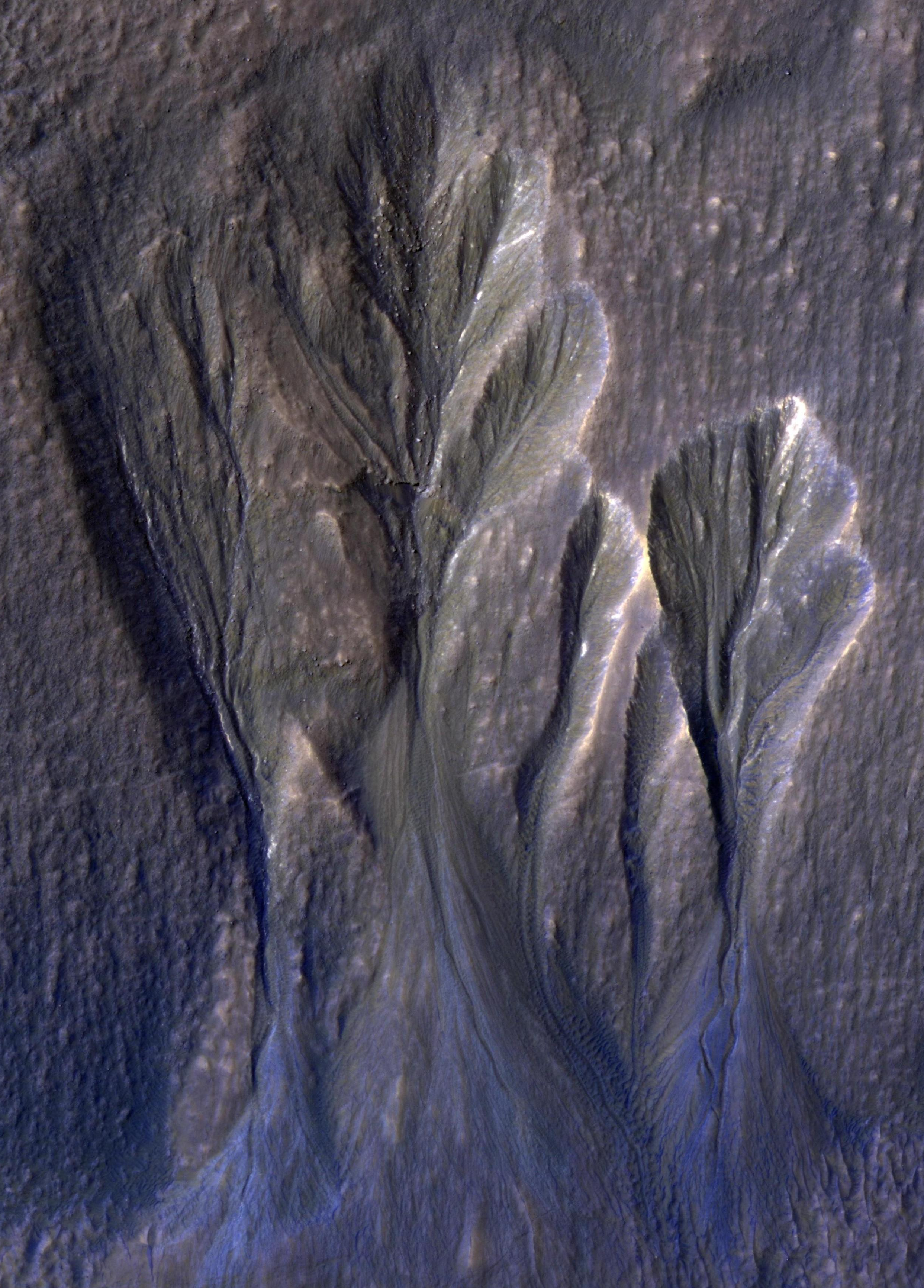Pockets of ice on Mars could shield living organisms from radiation that is lethal at the surface, while allowing through enough light to provide the energy to grow and reproduce, a team of astrobiologists claim. Whether such conditions last long enough for life that evolved when Mars was wet to persist is an open question, but the work is further evidence we’re a very long way from exhausting the search for Martian organisms.
Almost 50 years after the first landers tested the Martian dirt, and after decades of rovers trundling across the terrain, it’s easy to get despondent. If we haven’t found anything better than a chemically modified rock, runs the argument, life doesn’t seem to be finding a way. However, the Red Planet is a much more diverse place than it appears, and there are distinctive parts of it we are yet to explore.
Optimists keep pushing back against the gloom by proposing ways life might persist in places we have yet to examine. Recently, that was in Tharsis province, where the suspected combination of volcanism and buried ice might be a game-changer. New work adds the ice deposits known to be present at mid-latitudes in some parts of Mars.
A shortage of liquid water represents the most obvious obstacle to life on Mars today, since we have struggled to envisage a suitable alternative solvent, but it’s not the only problem. Earth’s atmosphere and magnetic field protect us from radiation that would otherwise quickly degrade DNA. Martian life would either need to have a more resilient code, or some other shield.
Dr Aditya Khuller of Caltech and co-authors note Martian ice is mixed with dust with deposits at midlatitudes as well as the poles. Above 75°, the ice can sit permanently at the surface. Between 30° and 60° either side of the equator, it is typically covered by dry material. However, asteroids or local landslides can expose the ice at these mid-latitudes for substantial periods.
Gullies in Terra Sirenum from the Martian Reconnaissance Orbiter. White areas are suspected to be ice like those investigated in the study.
Image Credit: NASA/JPL-Caltech/University of Arizona
The combination of ice and dust blocks the passage of UV radiation, so a layer could substitute for an atmosphere in this respect. Earthly organisms are known to live this way, using the light that filters through ice to power the chemical reactions they need.
That doesn’t mean microorganisms would have it easy. Too much material between them and the Sun would cut UV to the point where photosynthesis would be impossible, or at least inadequate. Consequently, Khuller and coauthors calculate what they call a “radiative habitable zone”, equivalent to the planetary habitable zone around stars, where conditions are neither too hot nor too cold.
However, where a star system’s habitable zone is typically millions of kilometers wide, the habitable zone within ice is narrow. Where dust represents between 0.01 and 0.1 percent of ice, the habitable zone sits 5-38 centimeters (2-14 inches) beneath the surface, depending somewhat on the size of the ice crystals. For purer ice, the zone would start at 2.15 meters (7.2 feet) and end at 3.1 meters (10.4 feet).
Under the right circumstances, the dust would cause the ice to melt, even when surface temperatures on Mars were well above freezing, solving the absence of liquid water problem, at least temporarily. This is only possible in the Martian equivalent of the temperate zone, not at the poles.
Such circumstances would certainly be challenging. Small changes in the quantity of ice above, or the amount of dust trapped within it, would move the radiative habitable zone. Like plants forced to migrate to higher altitudes or latitudes by global warming, any Martian microbes might not survive rapid shifts.
Nevertheless, the work raises the possibility that even if samples collected by Perseverance for return to Earth prove lifeless, we should not give up on Mars, and shift our exploration targets instead.
Holes formed on Alaska’s Matanuska Glacier by dust particles that melt into the ice over time, known as cryoconite. Eventually, small pockets of water form below the glacier’s surface.
The authors acknowledge they are not the first to raise the possibility of life surviving within Martian ice. However, they claim previous estimates of the location of a radiative habitable zone used data on UV absorbance from fresh snow or sea ice, neither of which is likely to resemble Martian ice deposits. Instead, this study used Greenland glacier ice polluted with black carbon.
The study is open access in Communications Earth and Environment.
Source Link: Dusty Ice On Mars Might Hold The Conditions For Life
